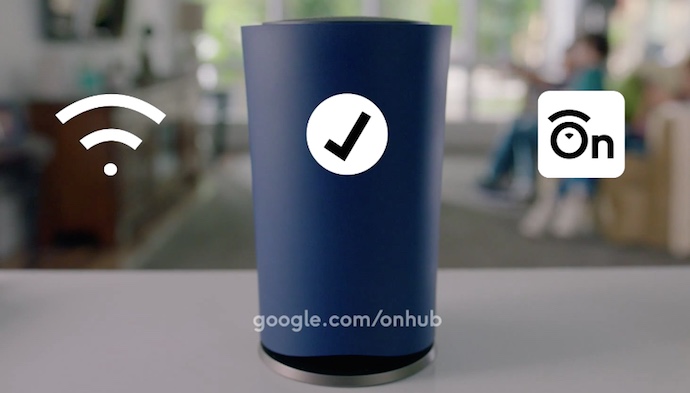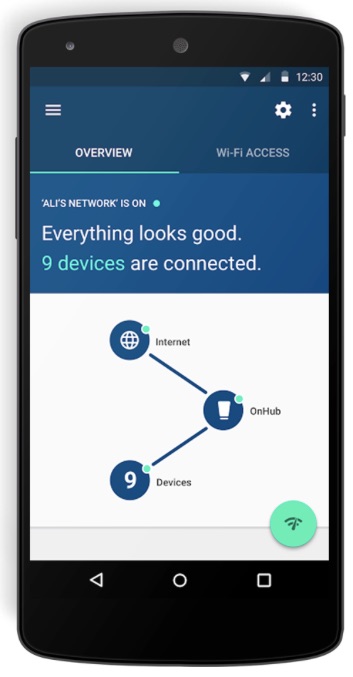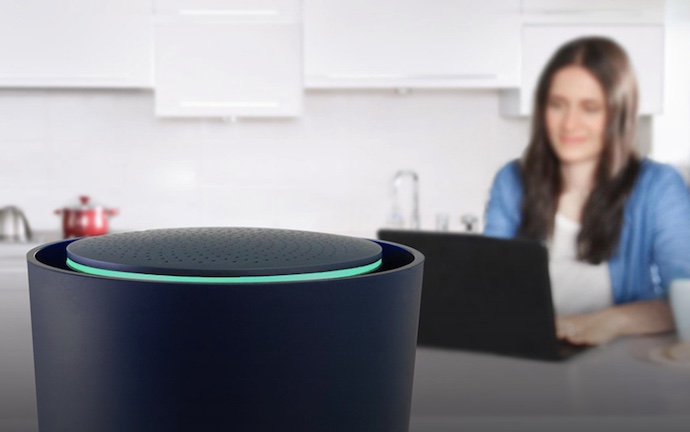
Wi-Fi has rapidly progressed from being a novelty to something we depend on. With a wave of ‘smart’ technology now flooding our homes, Wi-Fi performance is more critical than ever. The need for reliable speed, bandwidth, coverage, security, compatibility, upgradability and setup that anyone can understand has driven tech giant Google—working with respected industry leader TP-Link—to release its own wireless router. Meet OnHub, the “new router from Google that’s built for all the ways you Wi-Fi.”
OnHub Key Specs
|
Good Wi-Fi Has Gone From Nice to Have to Critical
I’ve written a number of times about how the often overlooked Wi-Fi router is key to a good experience when it comes to your wireless experience at home. That extends from things like snappy web browsing to lag-free online video games, smooth streaming video and the ability for your growing collection of smart devices to get the connection they need. Here’s my latest take on the importance of that router, if you want more detail …
Google is clearly on the same page. The company has a lot riding on you having a solid home Wi-Fi experience. After all, that Wi-Fi connection is how your smartphone or tablet (running Google’s Android operating system), your Chromebook (running Google’s Chrome OS), your Nest smart device (a division of Google) and your Google Chromecast access the Internet from your home.
If your Wi-Fi is slow, insecure or lacks the ability to support many connected devices, then your experience suffers and Google’s products (among others) won’t perform the way they were intended.
So Google took the bull by the horns and designed its own router that specifically targets the pain points.
 Google OnHub Advantages
Google OnHub Advantages
The Google OnHub experience starts with simple setup. A mobile app ‘speaks human’ as Google says, making setup and network management less intimidating. There are simple network tests with suggested solutions. The OnHub itself automatically checks for interference and adjusts wireless settings appropriately.
12 antennas arranged in pairs provide 360-degree Wi-Fi coverage and the designer-look shell (with softly glowing indicator lights) makes it more likely you’ll place the OnHub in the open where it can be even more effective. Wi-Fi prioritization and smart software that detects the best Wi-Fi connection for each device on your network keep things humming optimally. Smart devices are supported not only over Wi-Fi, but also through additional wireless standards including Bluetooth SmartReady, Thread and Weave. Finally, Google will push router updates to keep it up to date with the latest security and new features as they become available.
In short, Google is promising OnHub will provide faster Wi-Fi performance than your old router, and automated updates that will ensure it keeps getting better.
The revolutionary OnHub from Google is available now at Best Buy





A lot of people are still hampered by slow internet connections. Even with the best router, if your internet connection is slow, you’ll still be limited, as most of the ways we make ourselves “smart” is through the internet and not just our home networks.
Will there also be a way for people to access the back-end of the router for more advanced users? There are certain ways I know I like to customize my router so it works best for my needs (open certain ports, MAC filtering, etc) and I am sure I am not the only one.
JB
@Juice0904 I’m not 100% certain what degree of access/configurability Google is going to permit for OnHub —the emphasis is on simplification and automated network optimization, so I suspect it may not have the same degree of configurability as third party routers. That’s speculation on my part until someone gets their hands on one, but Google has published onHub support documentation on “Advanced Networking” and that covers off:
Brad.
I agree with Juice….. while the goal is to reduce monthly internet costs… many appear to subscribing to slower internet packages.
I just went from 25 to 100Mbps with Telus. My wifi is more stable than ever before. I can watch YouTube vids so much better while my dual DropCam’s are running in HD to the cloud.
Here’s a great site to evaluate your wifi and ethernet connection speeds.
http://rimouski.speedtest.telus.com/
Comments are closed.